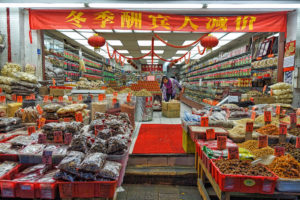Traditional Chinese medicine is a scourge on exotic wildlife
 5 Agustus 2019
5 Agustus 2019
The illegal global wildlife trade is a multibillion-dollar business with much of it concentrated in Southeast Asia, according to a new report by the United Nations Office on Crime and Drugs.
Most of the trade in the parts of endangered and exotic species is conducted by international criminal syndicates and is intricately tied to other illegal activities from drug trafficking to people smuggling, the UNOCD says. “Organized crime groups are generating tens of billions of dollars in Southeast Asia from the cross-border trafficking and smuggling of illegal drugs and precursors, people, wildlife, timber and counterfeit goods,” the agency says.
No country in the region is unaffected. Even Singapore, a small island state with little natural habitat left on it, has been embroiled in trafficking operations. International smuggling networks use the country as a logistics hub from where they ship wildlife parts like ivory, rhino horns and pangolin scales from Africa and elsewhere to their intended destinations in China, Hong Kong and Vietnam.
At these destinations many better-off costumers are willing to fork out minor fortunes for these animal parts, often in the atavistic belief that these parts possess awesome curative properties as per tenets of Traditional Chinese Medicine (TCM). Yet most of such beliefs are wholly unscientific. Rhino horns, usually consumed in powered form, do not cure gout or rheumatism, much less cancer.
Ground tiger bones or whiskers do nothing to alleviate meningitis or malaria. Nor does the consumption of certain body parts of tigers make men more virile. The bile of sun bears is hardly an effective remedy for hemorrhoids, conjunctivitis or hepatitis. At best such “cures” can provide the benefits of the placebo effect.

And yet millions of people across the region – from China to Malaysia – continue to place stock in the curative properties of exotic animal parts despite no scientifically verifiable evidence of their medicinal worth. These “traditional” cures are throwbacks to a superstitious view of the world that would have us believe that by consuming parts of an animal we can imbibe its natural properties from longevity to vigor.
According to traditional beliefs, for instance, consuming the eggs of sea turtles guarantees a long life, the rationale being that turtles have long lives and therefore eating their eggs will help people live longer too. That’s nonsense, of course. In the same vein, traditional Chinese remedies are frequently used for nonexistent maladies. The horn of rhinoceroses (animals that the ancient Chinese mistook for mythical unicorns) is still at times prescribed for “demonic possession,” an imaginary condition.
Meanwhile, most traditional medicines obtained from exotic animals are useless at best and positively harmful at worst. Anyone treated for venomous snakebite with rhino horn risks a painful death. Nor can rhino horn “purify” putrid water and make it safe for drinking, as many practitioners of traditional medicine would have it. Rhino horn is made of keratin, the same substance that comprises human nails. You might as well be chewing those for the exact same medicinal benefits, which are none.
Several mixtures employed in traditional medicine are known to contain naturally occurring toxins and hazardous contaminants, which can cause a variety of debilitating diseases from kidney failure to cancer. In a study of patients with cancer of the upper urinary tract in Taiwan, where Traditional Chinese Medicine remains widely in use, researchers found that 84% of patients showed prolonged exposure to aristolochic acids, which are known to be carcinogenic yet are common in traditional medicine.
Studies like this, observed Fritz Sörgel, head of the Institute for Biomedical and Pharmaceutical Research in Nuremberg, “show very clearly how dangerous the products of TCM can be. The public needs to be better informed about these dangers.”
Despite all that, Traditional Chinese Medicine is enjoying a renaissance of sorts in Asia and farther afield with billions of dollars’ worth of quack remedies sold both in brink-and-mortar apothecaries and their online varieties. In China itself, the country’s booming economy has been a boon to traditional medicine with more and more people now having the financial wherewithal to pay for overpriced brews, concoctions, tonics, plasters and ointments in the belief that these are the key to a long and healthy life.
All this is bad enough. What’s worse is that such persistent beliefs in quack remedies have come at a terrible cost to wild animals and their ecosystems from Malaysia to Cambodia and from Indonesia to Thailand. Tigers have been poached to the brink of extinction; wild rhino populations have been decimated; countless sun and moon bears have been condemned to fates of lifelong misery at “bile farms” in Vietnam and Laos, where they are subjected to intolerable abuse.
Poaching, fueled mainly by traditional medicine, has reached epidemic proportions across much of Asia, Africa and elsewhere. Even as the numbers of wild tigers, rhinos and turtles dwindles, the price of any remaining animals increases exponentially on the illegal wildlife market, thereby providing yet more incentives to poachers to hunt critically endangered species.
Even if traditional cures made from animals did have some healing properties, they would still not justify all the pain, suffering and death inflicted on wild and captive animals alike in order to obtain those cures. In their quest to be healthy, many consumers of Traditional Chinese Medicine are making ecosystems very sick indeed.
The post Traditional Chinese medicine is a scourge on exotic wildlife appeared first on Sustainability Times.
